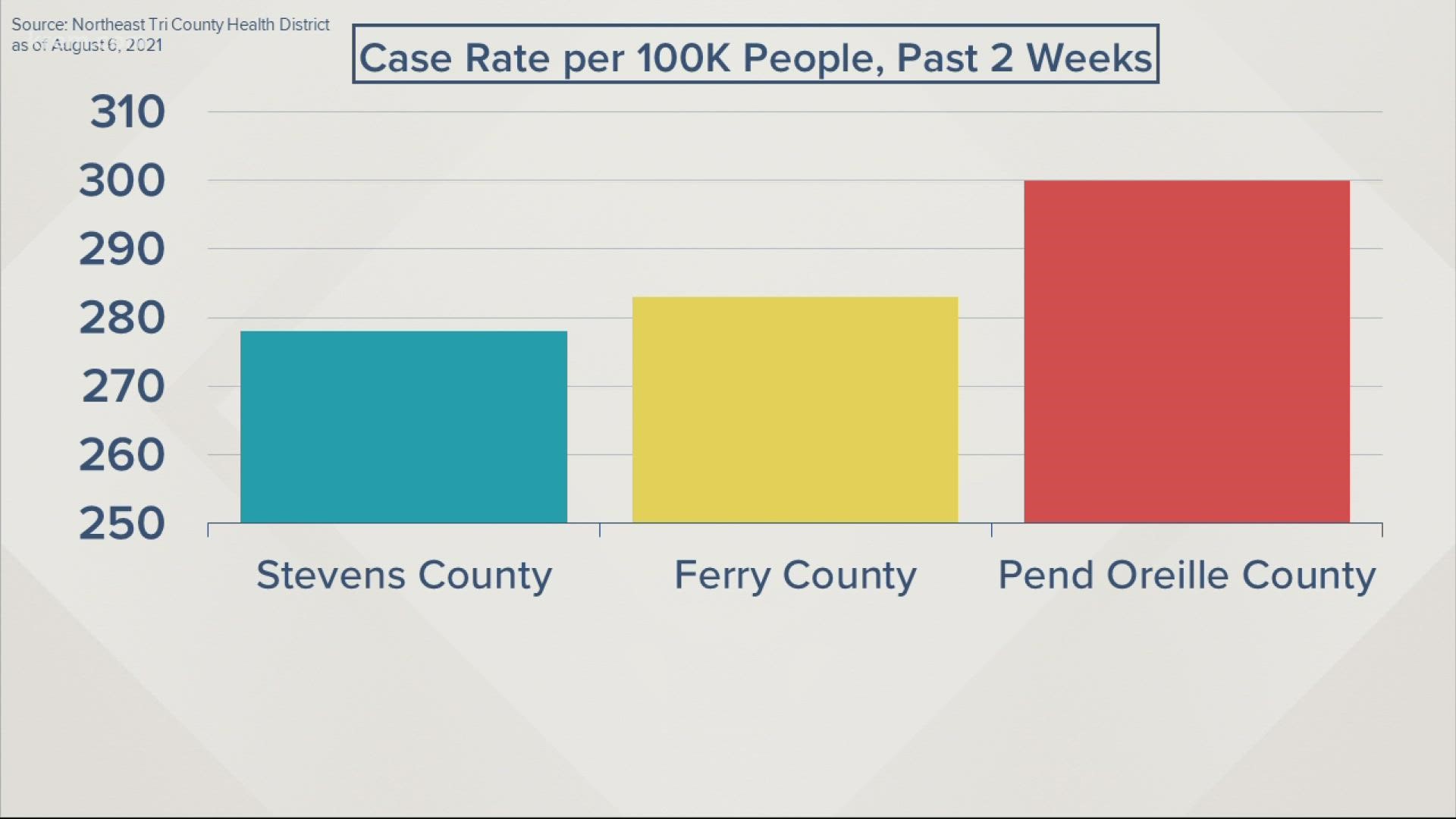FERRY COUNTY, Wash. — The final two members of a wolf pack occupying the old Profanity Peak Pack area will be killed, according to a Washington Department of Fish and Wildlife news release.
The kill order comes after members of the pack, which the department dubbed the Old Profanity Territory pack, killed or injured at least 16 cattle. The most recent was on Tuesday, according to the release.
WDFW killed a member of the pack on Sept. 16 following documented depredations. Per agency policy WDFW then monitored the area to see if lethal removal was effective. Despite two depredations in early October WDFW refrained from killing more wolves due to concerns about whether the range riding and other nonlethal deterrents were being implemented effectively.
The livestock in question are on a federal grazing allotment. Per allotment rules the producer was supposed to have his cattle off the land on Oct. 15. However, because of the “dense timber and rugged terrain” 10 percent of the producer’s cattle remain on the federal land.
In an interview Thursday Jay Shepherd, the wolf program lead for Conservation Northwest and one of the founders of the Northeast Washington Wolf-Cattle Collaborative, said in past years wolf-cattle conflicts had usually tapered off by now.
“It’s a weird year,” he said. “It just keeps going.”
WDFW must wait eight court hours between the announcement of a lethal action order and the execution of the order. In the past environmental groups have used that time to challenge the kill order.
Despite losses of roughly a dozen wolves a year from selective state-authorized lethal control, plus poaching, vehicle collisions and other human-related causes, Washington’s wolf population has grown each year. A minimum of 122 wolves, 22 packs and 14 successful breeding pairs was reported by the WDFW this winter.
This story will be updated throughout the day.
The full news release is copied below:
WDFW Director Kelly Susewind today reauthorized department staff to lethally remove the remaining two wolves from a pack that has repeatedly preyed on cattle while occupying the Old Profanity Territory (OPT) in the Kettle River Range of Ferry County.
On Sept. 28 the department initiated an evaluation period to determine whether removing two wolves from the OPT pack last month has changed the pack’s behavior and reduced the potential for recurrent wolf depredations on livestock.
The Wolf Conservation and Management Plan and the department’s protocol indicate that a post-removal evaluation period should consider any depredations that take place after one or more wolves are removed from a pack.
The department documented two wolf depredations to calves found in the allotment between Oct. 5-7, and determined that the depredation by the OPT on Oct. 5 likely occurred after the removal period.
That incident would have supported a decision to remove more wolves at that time, but the Director sustained the evaluation period to consider the details and complexities of the situation in the field.
The U.S. Forest Service allotment where the affected producer grazes his livestock is large and lies entirely within the territory of the OPT pack. After the Oct. 5 depredation, the department took additional steps to document the range-riding operation on the allotment to make sure it is as effective as it can be.
However, the department documented another wolf depredation to livestock on Oct. 23, bringing the total to 16 wolf depredations by the OPT pack.
The affected producer was scheduled to remove his livestock from the U.S. Forest Service allotment by Oct.15. In practice, about 90 percent of the livestock are usually removed by that date. Due to the dense timber and rugged terrain, it may take several weeks longer to round up all the cattle on the allotment.
The producer is transporting a portion of his cattle to private grazing lands west of the Kettle Crest and another portion out of state. The private grazing lands west of the Kettle Crest are within the OPT pack territory, although they are at a lower elevations and on the periphery of the pack territory, which may reduce the likelihood of wolf depredations in these areas this winter.
There are also several other allotments with cattle within the OPT that are in a similar situation in terms of removing them from Forest Service grazing allotments.
The livestock producer who owns the affected livestock has continued to employ non-lethal methods to deter wolves from preying on his herd. Strategies used include contracting range riders to monitor his herd, removing or securing livestock carcasses to avoid attracting wolves to the rest of the herd, and removing known sick and injured livestock from the grazing area until they are healed.



